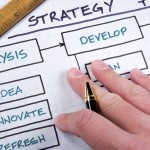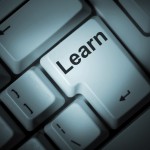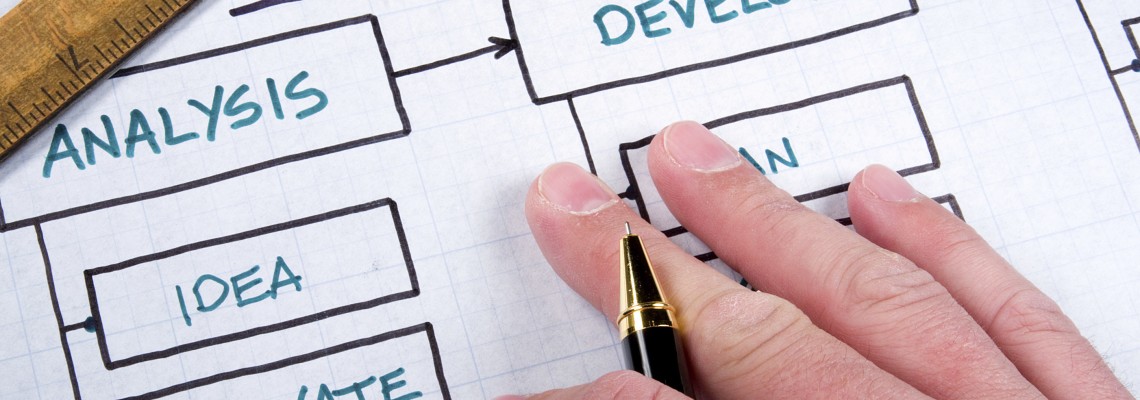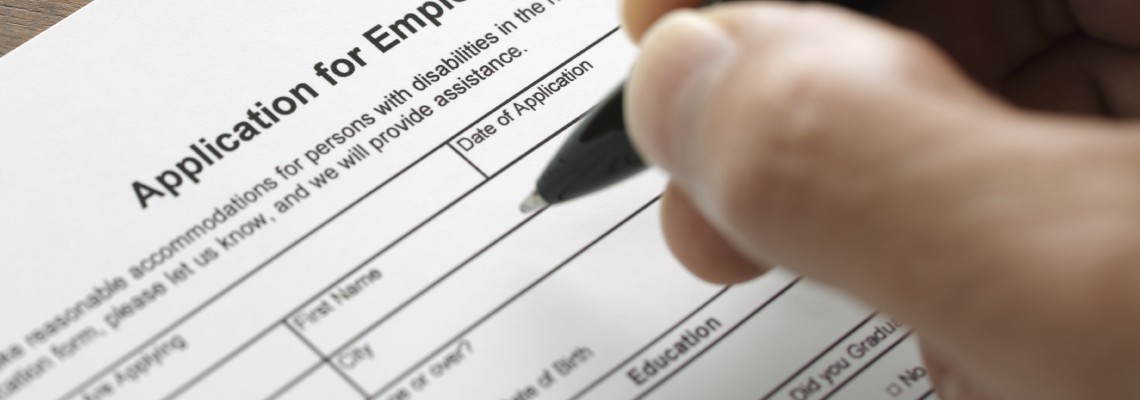-
Collaboration
“New ideas pass through three periods: 1) It can’t be done. 2) It probably can be done, but it’s not worth doing. 3) I knew it was a good idea all along!” ~Arthur C. Clarke
-
Innovation
“Don’t ask what the world needs. Ask what makes you come alive, and go do it. Because what the world needs is people who have come alive.” ~Howard Thurman
-
Consulting
“Imagination is more important than knowledge. For knowledge is limited to all we now know and understand, while imagination embraces the entire world, and all there ever will be to know and understand.” ~Albert Einstein
-
Join the Team
“I know not how I may seem to others, but to myself I am but a small child wandering upon the vast shores of knowledge, every now and then finding a small bright pebble to content myself with” ~Plato
Schedule
*Note: This is the expected schedule for this semester. However, working with real clients can lead to unexpected schedule changes. I will update the online schedule as necessary. For the online section, all assignments will be due according to the information in the Monday email. We will discuss specifics of each assignment in that email. Make sure to complete the readings for each week before you begin working on the assignment. The readings are designed to help you accomplish your task for each week. You will be expected to demonstrate principles of technical communication in each of the assignments listed. The abbreviation “TCT” stands for Technical Communication Today, the course text.
In this unit we will explore the changing role of technical communication. The most significant characteristics of technical communication is that you have to customize the information for a particular reader and that reader is located in a particular time and place. This method requires thinking about the ways new technologies alter how readers experience content and how they experience design.
Sometimes you will be aware of your potential reader, then your job is much easier. For instance, writing a proposal to your manager. There you will think about that person’s background, responsibilities, history with organization, attitudes and alike. While preparing the proposal you will be considering these factors to entice the manager and to make a persuasive document. But what if you are asked to create content for the web? Who is your reader? How will you organize content effectively to accomplish your goals as a communicator?
In this unit we will try and answer questions like what are the basic concepts of technical communication? What are the key skills involved? And how has the web changed the role of the technical communicator?
Our learning objectives
- To add to the working definition and list of characteristics presented here
- To deepen our understanding of content production/management
- To further define the role of the content developer in the context of TC
- To think about these things but also to actively experiment and try out techniques – reflection-in-action
Assignments
The deadline for all assignments and activities is Sunday, May 26, 11:59 p.m.
- Read Unit One overview Powerpoint
- Read TCT Ch. 11 “Starting Your Career”
- Watch Professional Connections videos on resume and interviews
- Post/Discuss two effective resume examples using Moodle
- Complete reading check on Moodle
- Apply for a position with Arisoph consulting
In this unit we will explore communication models, ethics of technical communication, and review XML. As we mentioned in the last unit, because technical writing has changed, is changing, and will change we need a cursory knowledge of the new terrain of communication. But we will also focus on traditional characteristics of TC, like the idea that TC is audience-driven. Meaning you write to satisfy the need for information of a particular audience. Knowing your audience is essential to crafting your message. Writing without the audience in mind will produce writing that may be too general to have interest to any particular party. Often if not targeted in its scope, a technical document may result in no audience at all.
In this unit we will try and answer questions like what is the difference between a Simple Transaction Model and an Interference model? What are the six elements that compose the basis of Ethical Communication? What is XML?
Our learning objectives
- To discuss the basis of Ethical Communication
- To explore XML
- To think about integrating visual elements, structure, and ease of selective access
- To discuss various communication models
- To think about these things but also to actively experiment and try out techniques – reflection-in-action
Assignments
The deadline for all assignments and activities is Sunday, June 2, 11:59 p.m.
- Read Unit Two overview Powerpoint
- Read TCT 3 “Working in Teams”
- Read TCT 4 “Ethics in the Technical Workplace”
- Complete reading check
- Prepare a Personal Ethics Statement
- Post/Discuss your two hypothetical ethic’s cases to Moodle. (see Moodle for instructions)
- Complete your first Team-forming activity
- Complete your Team Contract
You do not need to be a technical writing expert to feel the impact of a poorly designed document. It may appear too busy, difficult to scan, and difficult to absorb. If you find yourself continually reviewing the same pages, it may either be that you are trying to learn something difficult that interests you or that you are trying to learn something that is just difficult due to design. In this unit we will explore Font Selection, Document Layout, Justification, Visual Features and Attributes, and Accessibility.
In this unit we will try and answer questions like what is good design? How is TC dictated by different strategies like Activity Theory, User-Centered Design, Embodied Interaction?
Our learning objectives
- To explore the concept of Information Design
- To deepen our understanding of document visual features and attributes
- To think about the use of tables to organize and depict data
- Examine cross-cultural symbols
- Explore the five principles of design
- To think about these things but also to actively experiment and try out techniques – reflection-in-action
Assignments
The deadline for all assignments and activities is Sunday, June 9, 11:59 p.m.
- Read Unit Three overview Powerpoint
- Revise document for the web (low-fi prototype) (see PowerPoint for additional instructions)
- Meet with your team about the midterm project
- Begin crafting individual project pitch (see email and PowerPoint for instructions)
- Team Post 4-5 ideas for the midterm
- Read TCT Ch. 12 “Strategic Planning, Being Creative”
- Read TCT Ch. 18 “Designing Documents and Interfaces”
- Read TCT Ch. 19 “Creating and Using Graphics”
- Watch ALL:
- Complete reading check
Like memos, reports, and documentation, the proposal is a specific genre with specific conventions. Proposals still need to answer the questions of any rhetorical situation, but there are certain moves that a proposal has to make in order to be successful. Outcomes can act as a sort of checklist of these moves: If a proposal has failed to do any of these things, then it’s probably not going to succeed.
In this unit we will try and answer questions like what is a baseline logic? How do I develop themes? What are the proposal’s generic structure slots?
Our learning objectives
- To learn about the processes and practices that lead to successful grant and proposal writing
- To explore the range of genres associated with the act of proposing, paying careful attention to how these genres are coordinated
- To understand the generic structure of proposals themselves and how this structure varies according to the institutional, social, and cultural settings in which a proposal develops
- To foster reflective practice, laying a foundation for proposal writing success in the future
- To think about these things but also to actively experiment and try out techniques – reflection-in-action
Assignments
The deadline for all assignments and activities is Sunday, June 23, 11:59 p.m.
- Read Unit Four overview Powerpoint
- Read Grant Proposal Requirements
- Read Midterm Proposal: Backgrounds Section
- Complete a Proposal Document (see PowerPoint for more details)
- Read TCT 8 “Proposals”
- No post this week
- No reading check
In this unit we will explore the ways in which electronic communication can be effectively used in the workplace. Like memos, reports and proposals, email and social media communication have their own set of stylistic conventions. We will discuss how tone, style, social presence, and ambient awareness play a large role in communicating effectively through these electronic forms. In addition we will look at how to determine the rhetorical situation and conduct reader analysis for workplace communication.
In this unit we will try to answer questions such as what are social presence and ambient awareness? What are the basic features of a letter and an email? How does business correspondence differ from academic writing? When is social media appropriate? How does the rhetorical situation influence workplace communication?
Our Learning Objectives
- To provide style guide and formatting guidelines for email and social media.
- To examine and use appropriate style, tone, social presence & ambient awareness in traditional forms of communication as well as social media.To provide style guide and formatting guidelines for email and social media.
- To reinforce strategies for determining the rhetorical situation.
- To conduct reader analysis for workplace communication.
- To establish differences between plain and persuasive writing styles.
Assignments
The deadline for all assignments and activities is Sunday, June 23, 11:59 p.m.
- Read Unit Five overview Powerpoint
- Read TCT Ch. 5 “Letters, Memos, & E-Mail”
- Read TCT Ch. 23 “Using Social Networking Tools”
- Read: Social media? Get serious! Understanding the functional building blocks of social media
- Read: TCT Ch. 17 Using Plain & Persuasive Style
- Read: What is netiquette?
- Watch: The Genre of Email
- Read: Brave New World of Digital Intimacy
- Complete midterm Proposal Document (see PowerPoint for more details)
- Complete Style Exercise
- Complete Reading Check
In this unit we will explore how to revise and edit a document for usability. We will discuss how grammar, punctuation and style play important roles in creating a positive ethos for you document. In addition we’ll briefly discuss the document cycling process of usability testing. We will also consider the needs of international readers.
In this unit we will try to answer questions such as what is usability testing? What is document cycling? What is the importance of human vs. computer-aided spelling, punctuation & grammar checking. How do revising, proofreading & editing differ?
Our Learning Objectives
- To provide strategies for writing instructions, specifications, and procedures.
- To examine the needs of cross-cultural readers.
- To introduce essential features of proper grammar, spelling, punctuation and style.
- To establish guidelines for document cycling and usability testing.
Assignments
The deadline for all assignments and activities is Sunday, June 30, 11:59 p.m.
- Read TCT Ch.20 “Revising & Editing for Usability”
- Read Who needs a technical editor?
- Read The Elements of Style by Strunk & White
- Review & Complete OWL Exercises:
- Grammar Exercises
- Punctuation Exercises
- Spelling Exercises
- Sentence Structure
- Sentence Style
- Paraphrasing
- Writing Numbers
- Read Proofreading:
- Beginning Proofreading
- Proofreading for Errors
- Proofreading Suggestions
- Revising for Cohesion
- Steps for Revising
- Read “Writing for a Global Audience”
- Post Editing Exercise
- Complete Reading Check
Technical communication is dictated by strategy. The strategy you select is contingent on the situation. The communication approach you design is based on the audience and purpose of your project. Communication strategies can be instructive, persuasive, or descriptive in nature. Your effectiveness as a presenter will rely on your ability to select the correct strategy for the situation.
When planning a presentation remember to consider the full range of communication characteristics, ethical considerations, and the impact of cultural preferences on communication. Reviewing the various communication models can assist in your development strategy.
Remember the adage “a picture says a thousand words” and apply it generously. Proper usages of tables, visuals, charts, photographs, and illustrations can greatly enhance the ability of a presentation to relay a message, provide information, and present data.
In this unit we will try to answer questions such as how to create an audience-centered presentation? How to implement visual design principles into a presentation? How to avoid using templates or cookbook
formulas to evade developing the skills of rhetorical analysis & presentation design?
Our Learning Objectives
- To explore how oral examples of technical prose anticipate & meet specific reader needs, rather than talk to explore or express your
thoughts & emotions. - To developing documents through logical division rather than narrative writing
- To learn to organize documents with explicit visual structure: decimal outline system, headings, and hierarchy.
Free image sources:
Assignments
The deadline for all assignments and activities is Sunday, July 14, 11:59 p.m.
- Read Unit Seven overview Powerpoint
- Read TCT Ch. 8, 21
- Read Engl 314, Phases of a Client-Based Project (such as the 3M project)
- Team review: Client Project (Dan’s video and emails)
- No Post this week
- No Reading Check
- Draft Client Project
During this last week you will focus on two projects for the client: (1) Preparing your oral presentation, and (2) finishing part 1 and 2 of the client project. This work will involve at least three steps:
1. Your job is to respond to the client’s needs and wishes, and to do your best to exceed their expectations. You will complete one technical document that includes all the content from part 1 and from the PPT in part 2. You are not creating another PPT, but instead using that content from the PPT to generate a technical document.
2. Pay close attention to the directions from 3M. Make sure you are responding to the client’s needs. Be thorough and careful in your revision and proofreading.
3. Finally, you will prepare an oral presentation for the client. This presentation should follow the directions from last week’s PPT. This will be a walk through of your work and should provide plenty of evidence for the client of value added. See example oral presentation in the course email.
Remember, your goal is to prepare step-by-step instructions, using visuals to help guide the reader through the document. Please combine both part 1 and part 2 into one technical document and separate the two parts with different tables of content. You should be focusing on creating a style and tone that can be carried through the entire document.
The teamwork on the final project should occupy a significant portion of your week, although you should also remember that the final individual report is also due Sunday, July 14th, 11:59 p.m.
PMs should be in constant contact with each team member. Teammates, you should receive direction from your PM on your part of the project and on your deadline for completing your portion.
Assignments
The deadline for all assignments and activities is Sunday, July 14, 11:59 p.m.
- Complete Client Project (Team)
- Complete Oral Presentation (Team)
- Complete Final Report (Individual)
Development

Employees of Arisoph Consulting work tirelessly to meet the needs of all our clients, whether they are individuals or large corporations. To keep our employees’ skills sharp, we require regular … Read More...
Design

During your work at Arisoph Consulting, you will complete several projects. Below are brief descriptions. You will receive additional details in weekly meetings and emails. Applying for Work The … Read More...
Consulting

To get a quote from Arisoph Consulting, please fill in the form below with as much information about your project as possible. We will respond within two business days. Your Name(required) Your … Read More...
Innovation

Ethics Ethics Resource Center | Online Ethics Center for Engineering and Research Planning Project Plan Example 1 | Project Plan Example 2 | Project Plan Example 3 Presentations Good and Bad … Read More...
Join the Team

A Personal Invitation to Join Our Team At Arisoph Consulting, we only hire the best. We are expanding our services and need experienced technical communicators, editors, research experts, and … Read More...
Environment

*Note: This is the expected schedule for this semester. However, working with real clients can lead to unexpected schedule changes. I will update the online schedule as necessary. For the online … Read More...



